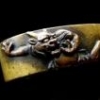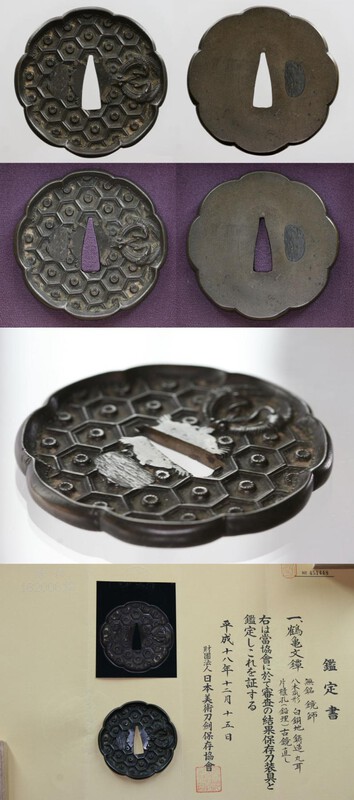Leaderboard
Popular Content
Showing content with the highest reputation on 03/28/2021 in all areas
-
I built a fire proof lined vault in the man cave and lined it with slat board. Then we got to work in the shop and made wooden, stepped brackets which allow a blade in shira saya to be displayed adjacent to the koshirae. Blades having just shirasaya simply rest on slatboard hooks. I’m now gradually repositioning blades and grouping them by eras, and schools which is useful for study purposes . jim7 points
-
5 points
-
He must've been tired lugging all of these swords around...... 1: "Field sword" this sold for $95,000usd - https://issuu.com/dreamedia/docs/145-issuu/2 2: "Presentation sword" fantastic special order sword by Imai Sadashige - https://pamplincollection.org/2020/12/14/general-tomoyuki-yamashita/ 3: Sword in the MacArthur "attributed" to Yamashita 4: "Swords surrendered by Japanese Officers, the closest two belonging to General Yamashita, August 1945." - apparently he was an Admiral as well 5: His actual sword, now at Westpoint academy:4 points
-
Here is my small collection of RJT gendaito. I have swords of all periods in collection but my true love are these RJT ones. If you compare the swords you see how different they are. The quality is wide above from most of that what you will in other periods. Not one sword has a forging flaw. These are strong swords. Some have a brutal cutter design, others are made as fast fighting swords. I love them all.4 points
-
Complexity in Japanese visual art tradition keeps on intriguing me. Even supposedly common themes may reveal more than one interpretation. I was prompted by a recent post in NMB (https://www.militaria.co.za/nmb/topic/35147-kozuka-calligraphy/) to reconsider a record in my database (I've collected just images, not the real tsuba): The NBTHK paper reports in description: あなめ図鐔 - aname no zu tsuba. According to a legend the poet Ariwara no Narihira heard a voice from a skull and recognized the bones of his former lover Ono no Komachi. Aname means something like "Oh, my eyes hurt!", and refers to lamentation about the discomfort produced by grass growing in the skull orbits. Ono no Komachi was one of the Rokkasen, the six best waka poets of the early Heian period, and she was renowed for her unusual beauty. The theme nozarashi (野晒) seems, at my untrained eyes, indistinguishable, but should be based on poems by Matsuo Bashō. I'd like to know some more precise references about the two themes. Thank you for reading.3 points
-
3 points
-
Mauro. You are way better. I just picked up the image. This kantei is proof of genuine, but it doesn't reveal whether masayoshi is a tsuba author, a kinko author, Bushu, or Inaba, or Aizu, affiliation, age, or address. If I am the client, I will call the secretariat for a complaint. And I will get even more angry when I hear NBTHK's curt answer.3 points
-
I am surprised that it has gone unremarked upon that Darcy Brockbank has a Juyo Tosogu Futatokorimono with menuki by Somin for sale. This shows why he is the pre-eminent western dealer. I had imagined that these were probably the only genuine pieces by Somin outside of Japan. Last week however I had the pleasure of looking at the catalogue of the museum of decorative art Copenhagen. Lot 1156 is a stunning kozuka with a design of fireflies also by Somin. The author Ogasawara Nobuo obviously accepts these as genuine as he also does with Lot 1157 a tsuba with katakiribori engraving . I hope that my copy of the photograph does this magnificent piece justice . If you haven't already done so, do yourself a favor and have a look at Darcy's menuki. Ian Brooks3 points
-
↑ Yes, I agree with what Stephen wrote. Tawara Tōda (aka Fujiwara no Hidesato). He rid the area around Lake Biwa of a giant centipede, using his bow and arrows, which earned him the thanks of Otohime and the Lord of Ryūgūjō. https://en.wikipedia.org/wiki/Fujiwara_no_Hidesato2 points
-
2 points
-
Hi Robert, nice tsuba. Ufortunately the NBTHK certificale states just the obvious (as usual...). The relevant transcription is: 河骨勝虫図鐔 - kawahone katsumushi no zu tsuba 銘 正義作 - mei Masayoshi saku 竪丸形 鉄磨地 鋤出彫 - tatemaru-gata tetsu-migaki-ji sukidashi-bori 象嵌色絵 鋤残耳 - zōgan iroe sukinokoshi-mimi (I see now that Yas was faster than me)2 points
-
2 points
-
2 points
-
2 points
-
Thank you Uwe, Very nice. Regarding the last armor (E), fully understand that Munechika used different "option " , but for the mei and date, the do always match the kabuto . First time I see the kabuto with one patern, and the do with another. I was just wondering if there is any specific reason to this. Do you have record of other armor makers doing the same thing? I have all my Munechika files in my hometown, but If my memory is correct this set was on sale in 1998 at Kinokuniya. It was a poor black & white quality picture, and cannot remember clearly, but I think the Maedate was the same. Not sure. If it was on sold, do you know who sold it and to whom. I would be interested to get more pictures of it. If someone from this great community recognize this armor, I would love to get in touch..... Flags, and Maedate are nice bonuses.....Hope they will stay with this original armor. We see too many case, where people sell only the maedate or the flags. It is great Uwe that you keep record of those armors in their original condition. To your Munechika's database, I am adding few more pictures of munechika armors. I would like to attract your attention to the 3 tatami gusoku. They have an interesting story. From left to right, we will call them A,B and C. A is signed Myochin ki Munechika date 1848 ( iron), B is signed Myochin ki munechika date 1858 ( iron), C is not signed ( leather) Till now, easy to understand, but now sit tight..... A has the same Hanpo as C, B has an Hanpo similar to the armor on the other picture. A has the same do, haidate as B and C. A has the same kote and sode as C. Means that B has a different set. At the begining I was a bit suspicious about those sode being original to this armor, but B and C share the same silk fabric, means they were probably made at the same period..... B and C have the same kabuto. Some genius separate the kabuto from the rest of the armor, but judging from the kabuto of its brothers B&C, I have a pretty good idea what it may look like. B and C have the same shape of Maedate. Those Maedate are original to their armor ( I was lucky).This maedate is from their clan symbol. I have looked around, and cannot find which clan it is. If anyone knows about this clan, I am really interested to know. One more hint. The kuginuki is the base for the 2 family crest. Those 3 armors are like the rosette's stone. If something is missing on one, the 2 others have it and vice versa. Still there? A, B, C all share the same back plate system to hold the do straight, and when I say they are similar, it means that all the parts were made at the exact same scale. Obviously from the same workshop. Munechika had a workshop, and here the proof of his armor "mass production". Uwe, is there any record of leather armor signed . I have seen leather armors signed in red lacquer ( genuine or not? Hard to tell with writing) but I am thinking of 2 or 3 leather armors that you know were made and signed by an armorer?. If you are still there, thank you for your help on my questions. Kind regards PS : The flags on the back are not related to those armors. Except for the one with the Tsuyama clan, related to the armor on the right with the same maedate.2 points
-
2 points
-
Regarding the rusty tang Yasukunito...I just don't know the reason. All I can say is I have noticed it as it was "common" on the Yasukunito I have seen. Regarding the quality of RJT blades. I am no expert on any blade but have collected for a long time. I started in Koto/shinto/shinshinto years ago (see pic - top to bot: Mino Kanesada 1700s, Kanabo Masazane 1530s, 3 gen Echizen Yastusugu 1660s, Ishido Mitsuhira 1660s, Shimada Sadasuke early shinto) so I know quality work when I see it. I went to RJT out of personal interest and can say that I think the work is very good. We don't know the exact details of course, but the RJT material, workmanship, inspection, testing process as set up was first class. I am not going to test one, but I think an RJT would stand up to one of the pre-WWII swords very well. I have never seen a flawed one, but I have seen a few that just don't "appeal" to me. So long story short, I have to wonder where all these doubts and debate about "standards" of quality and not surviving one polish are coming from. They are good swords made to do a good job...period. It seems to me all this chatter is just that (no offence intended).2 points
-
1 point
-
1 point
-
1 point
-
Stephen, great post. I have 2 Iida latch swords, and tried on many occasions to contact the shop for information, with no success. This helped me big time, thanks.1 point
-
So he was an admiral after all! On another note, this gunto with worn off lacquer of the same’ might explain some of the “white“ handled Swords we see in pictures of Navy officers. I can’t believe I had not thought of it, but I own a navy one where the lacquer is worn off like this as well.1 point
-
No.17 - Tsuba in sentoku and copper with gold , silver and shakudo highlights , beaded shakudo rim. 7.0cm x 6.4cm x 0.4cm. Possibly Nara school late18th/early 19th cent. An unusual combination of metals , acquired eight years ago at auction. Simple , nicely executed design , reminding me of scroll / screen paintings.1 point
-
Chris, you are very lucky to have those two smiths, Okimasa especially. All your swords are good and yes, I agree, if you look carefully in RJT, you can see many "styles" of sword in them...I love to study them. Keep collecting, Regards,1 point
-
Hi all I am new to the collecting of Nihonto So I know very little but I am trying to learn so having seen this thread I thought it might be the right section to show you all this that I bought recently it being my first purchase, I bought it not because I had any knowledge but because I liked the overall look and the blade seams very delicate. ( I now know that that is not the right thing to do after reading this message board) but if possible I would like to know more about it good or bad .1 point
-
1 point
-
Very nice. Is no. 6 the famous Tsukamoto Okimasa? - if so, I have one by his elder brother Tsukamoto Masakazu (private order, no star, made 4/17 - he was an RJT by then I think). Also, is no. 9 Yamagami Akimitsu (looks like) - if so I have an RJT by his elder brother Munetoshi (64.0 cm, short kissaki, sturdy blade, made 5/18), and also a private order by Munetosh (66.0 cm, long kissaki, lighter, more elegant blade, made 9/16). Although I also have a 69.8 cm RJT blade (the RJT scheme regulations allowed it), it is interesting in the case of Munetoshi, who made elegant swords privately, made shorther, sturdier blades for RJT scheme. An interesting field of study the RJT sword. Regards,1 point
-
Yes, very nice Vajo...and not one sword has a forging flaw...same as my RJT swords - all excellent. Thanks for the photo...nice collection, you are very fortunate to have them...smith names? Regards,1 point
-
1 point
-
1 point
-
1 point
-
A little addendum here that may be relevant. Many years ago I met one of the guys who had guarded Himmler just after his arrest, and wanting a souvenir he raided Himmler's suitcase and took the Wehrmacht penknife from it, and in order to avoid his theft being discovered then replacing it with another that he had picked up on his way through Germany, . Later he found out that every squaddie in the detail had done just the same. Someone had Himmler's penknife....... but no one knew who!1 point
-
Stephen just posted a video interviewing the 5th generation Iida, who runs a sword shop. He briefly discusses his ancestor's invention.1 point
-
Not just gunto fittings - Iida latch and it's inventor! I'll link this to Neil's thread at Iida Latches. That was one massive naganita, too! This Type 19 was interesting. The front lip of the guard seems to extend considerably more than the norm. Wonder if it's just an illusion due to something on his jacket behind it?1 point
-
It's a bit like shoes, you need 2 pairs for work, and 2 casual pairs, and at least one pair for formal occasions. So you need a parade sword, a fighting sword and a sword for presentations and if possible a spare or two for the unexpected!1 point
-
1 point
-
1 point
-
1 point
-
Sorry Arthur, seems that I cannot send more pictures... I exceed what I can send apparently..😩will try again tomorrow. That’s all for now. cheers1 point
-
More again for the Bizen, it was very very hard to open, and my friend gunsmith took a lot of time to open it. Originally it was in its right position (you can with the color difference on the barrel. it was so tight, that ever air and rust could get to it. after opening it, you can see the maximum I can close it. Far from the desired position. What I am doing is the stop 1/4 before to match the stock. the Bizen is very tight, and almost no room between the Bizen and the barrel. I believe it was only used a few times, and because the Bizen rusted, not used for a long long time....... Considering it’s very good condition and strength I will use it for shooting. PS: note the matching number on the Bizen and barrel1 point
-
Regarding the rusted Nakago, I wonder if it is related to the process of dipping the Nakago into salt water before placing it the Tsuka for a superior lockup? My other thought it was really just used hard and put away wet in the field.1 point
-
1 point
-
Mark, I would look at 貞弘 as one possibility for the mei. I think that the mune has been lowered and the length reduced, rather than this specific uchizori, nagasa & sugata being original to the blade. Regards, Ray1 point
-
Hi, thanks for the link how do you control humidity and dust etc I had a cabinet built for my other military collectables ,sealing the cabinet unfortunately does not work for some strange reason it still gets dusty and mildew tends to form,I solved it by pumping filterd dehumidified air from the room that in was in ,into the cabinet ie positive air pressure stops dust coming back into the cabinet as long as I change the filter paper[I use cooker hood filter paper] it minimise's the dust problem and no mildew or rust ,only problem it wasn't made for swords and they are rather difficult to get out and non of the glass is wide enough to see them think it's time to build another. Mark1 point
-
I have examples of tsuba from the Inagawa School in Edo which I hope will be of interest to MNB readers. The first is signed Yoshitoshi and the second, a daisho pair, are signed Yoshimitsu. The tsuba were purchased in two separate lots, a year apart, from the same auction house and the boxes contained similar descriptions in Japanese, so I assume that they were being sold by the same Japanese dealer/collector. Having no previous knowledge of the artists or the school, I make no claims as to the authenticity of the signatures (appraisals welcome), but as neither was a master of the Inagawa school I guess they are more likely to be genuine. The first tsuba I’m posting from the Inagawa School in Edo is signed Yoshitoshi (良寿, though Bonhams read this as the alternative Nagatoshi, which sent me on a long fruitless search for the artist). It is a marugata (7.2 cm x 6.8 cm, thickness [rim]: 0.4 cm. Weight: 142g) shakudo nanako tsuba with a copper/silver rope fukurin. The front of the tsuba depicts a Chinese sage beneath a thatched roof trying to read by moonlight and the back shows a few plants, rocks and five geese. The design is a mixture of carving and iroe takazogan. The only criticism I have of the workmanship is that the leaves of the bamboo just seem to be scattered around the stems rather than growing from them. The tsuba came in a kiri box with a Japanese inscription on a strip of paper, as follows; 良寿. 木村氏. 木邑とも銘を切る. 稲川良克の門人で, のちに寿良に学ぶ. 木邑良寿(花押),江城東紅菓川辺木村良寿年十五歳而作之と銘する. 獅子や人物図の高彫と片切彫の作がある. 江戸住. 江戸時代後期 My poor Japanese and Google translates this as: ‘Yoshitoshi. Kimura family (This misled me for months as I thought it read Mr Kimura, and was the addressee of the note!). Also signed Kimura with the kanji (木邑). A student of Inagawa Yoshikatsu, who later learnt from Toshiyoshi (can also be read as Juryo or Toshinaga). The Kimura Yoshitoshi (signature) was used for 15 years to mark his stay in Edo Higashi Kanagawa Ichigi village (?). There are works in high relief (katabori) and also those cut out in the round (katakiribori) such as lions. He was an Edo resident. He lived in the late Edo period.’ Corrections to my translation welcome. According to Markus Sesko (Genealogy Charts p 45) Yoshitoshi, a member of the Kimura family, worked in the Inagawa School in Edo and studied under Yoshikatsu, the third generation master and first member of the Kimura family to join the School. Yoshikatsu (1725-1779) was adopted by the second generation master, Naokatsu (1720-1763, who appears to have been only 5 years older than Yoshikatsu!). Seven other students of Yoshikatsu are listed, including the possible maker of my other Inagawa School tsuba: Yoshimitsu, posted separately below. No dates are given for any of the students but I deduce that they must have lived approximately 1750-1825. I have two possible candidates for the identity of the Chinese philosopher depicted on this tsuba, namely Che Yin (Sha’in) or Sun Kung, both from the Jin dynasty (265-420 CE). Che Yin used a bag of fireflies to provide light to study by, but as no fireflies are shown in this tsuba it’s probably not him. Sun Kung studied using moonlight reflected in the snow to provide light to read by. This tsuba shows only a thin new moon and no snow. Perhaps this is why the sage is looking despondent and is looking forward to the full moon in about 10 days’ time and perhaps some snow as well. I usually get the attributions to the mythology wrong, so I appreciate corrections from NMB scholars. Best regards (Just a guy making observations, asking questions, trying to learn)1 point
-
I was able to view and download the webpage in question via the Wayback Machine. It was, as you inferred, a rather interesting read. I for one am glad that you have such a good memory! Wayback Machine ryujinswords-tang-stamps-2017-1218.pdf1 point
-
1 point
-
During our time in Japan we lived in Zaimokuza one of the locations where the heads were found is now the second most popular McDonalds in the whole country... -t1 point
-
Thanks David, when I saw it I thought the same. It didn't take a lot of thinking about and at the time it wasn't a lot of money. All the best.1 point
-
1 point


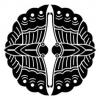
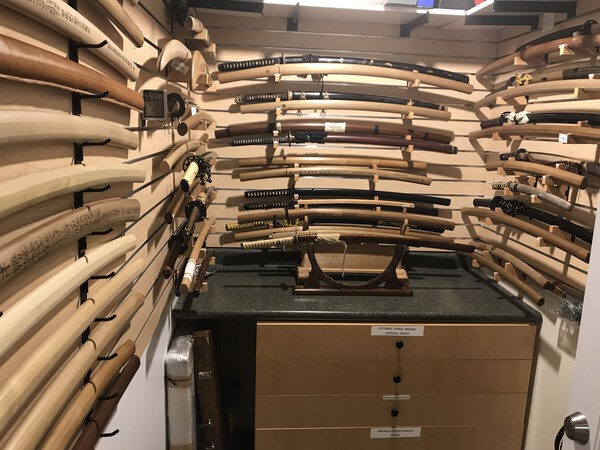


.thumb.jpg.0301960a44861e338f76d2b54bc21a44.jpg)
.thumb.jpg.4ba65dea41a7b958b43fa0dee05cc7ea.jpg)




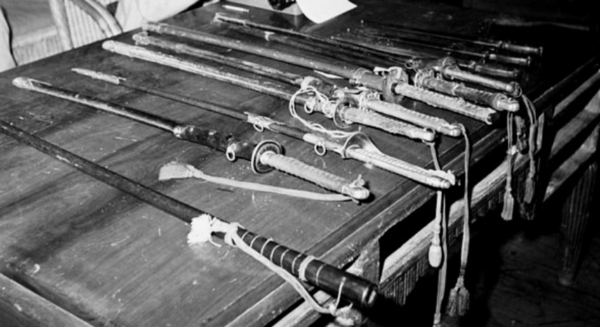

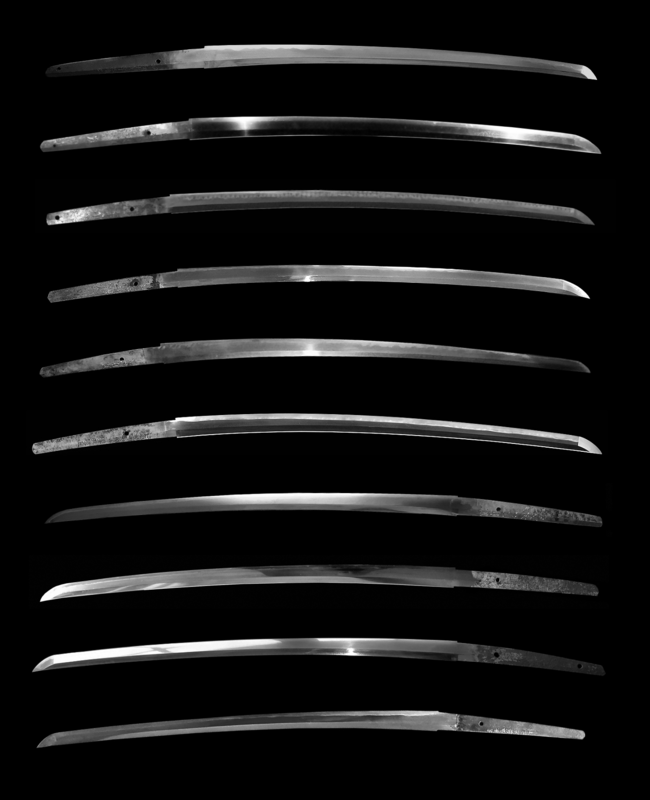
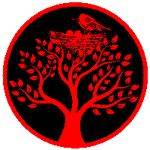


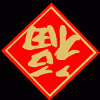

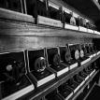






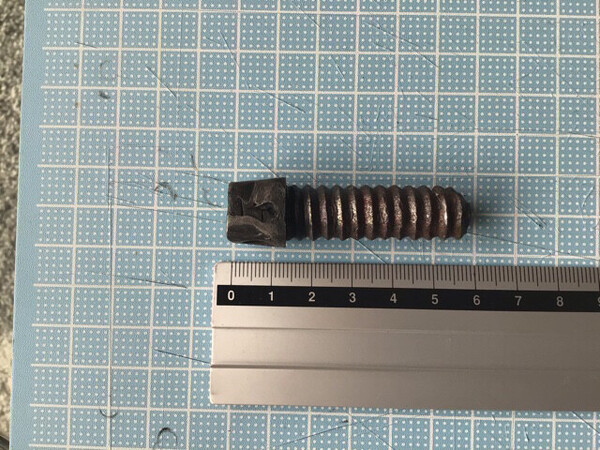



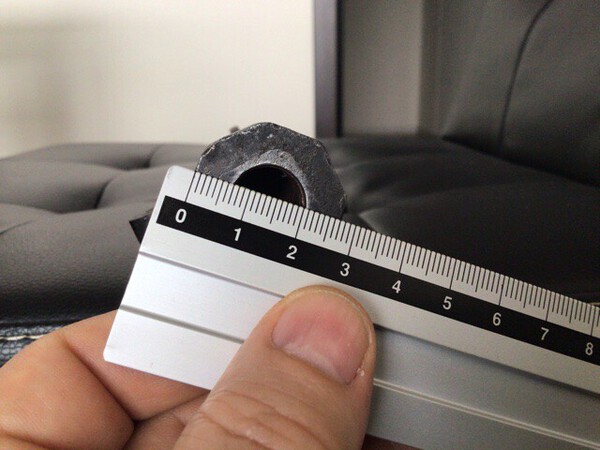

























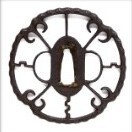
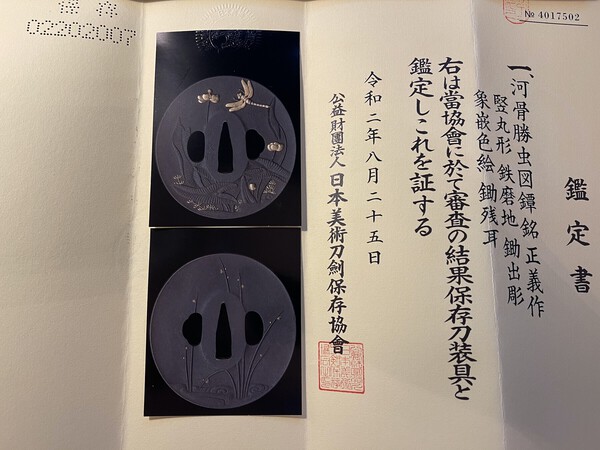
.thumb.jpg.3b0e1d29ca3c36b42cd0c18e7e975d10.jpg)



